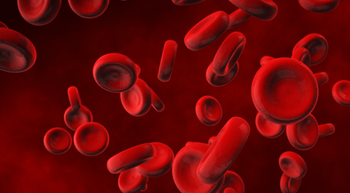
Diabetes-Cancer Link Could Inform Future Screening Efforts
A greater likelihood of developing most types of cancer was found to be associated with type 2 diabetes, according to findings of a large Canadian study published recently online in the journal Cancer.
Iliana Lega, MD
A greater likelihood of developing most types of cancer was found to be associated with type 2 diabetes, according to findings of a large Canadian study published recently online in the journal Cancer. The strongest correlation was 10 years prior to, and 3 months after, a diabetes diagnosis, and the findings could, with further study, help to inform enhanced cancer screening programs targeted for those at higher risk.
Individuals with diabetes were more likely to have been diagnosed with a first cancer within the decade before diabetes diagnosis, when compared with those without diabetes. Once diagnosed with diabetes, an increase in cancer was observed during the first 3 months, as those with diabetes had a 62% greater chance of being diagnosed with cancer than those without diabetes.
“This may, in part, be explained by increased healthcare visits and screening tests following a diagnosis of diabetes,” said study author Iliana Lega, MD, a clinical scientist at the University of Toronto, in a statement. After the 3-month mark, the difference in cancer statistics between those with diabetes and those without leveled off.
While detection bias may play a role in the number of cancer diagnoses within the first few months of a diabetes diagnosis, the reason for the higher prevalence (23%) of cancer a decade prior likely has more to do with the risk factors leading up to diabetes, independent of seeing a doctor.
“This observation may be due to shared metabolic risk factors for diabetes and cancer that are present during the prediabetes period, such as insulin resistance and hyperinsulinemia,” the study’s authors wrote. “These metabolic alterations may precede a clinical diagnosis of diabetes by up to 10 years.”
The study looked at 516,219 patients with diabetes, and matched them with a control group of 516,219 individuals without diabetes. All patients were aged ≥30 years, leading the study to reflect cancer risk for type 2 diabetes, since type 1 diabetes is rare in this age group, Lega said in an interview with Oncology Nursing News.
Diabetes was associated with a “significantly increased risk” of pancreatic, endometrial, liver, and thyroid cancers in both time periods studied. There was a jump in colorectal and bladder cancers within the first 3 months of a diabetes diagnosis, but it then leveled off.
As diabetes rates continue to grow in many countries, including the United States, study emphasized the importance of intervention and prevention.
“We have excellent evidence that diabetes can be reversed with physical activity and lifestyle interventions in high-risk individuals,” they wrote. “Such interventions are urgently needed both on an individual and population level, not only to reduce the risk of diabetes and vascular complications, but also to potentially reduce the burden of cancer in this population.”
Further, Lega mentioned that increased screening could improve outcomes for people with diabetes who may potentially have cancer as well.
“Our findings suggest that people with diabetes, and even those at risk for diabetes, may have a higher risk of cancer and therefore may benefit from enhanced cancer screening and prevention programs,” she said. “However, more research is needed to assess how to best implement such targeted programs in this high-risk population.”
Lega IC, Wilton AS, Austin PC, et al. The temporal relationship between diabetes and cancer: a population-based study [published online ahead of print July 11, 2016]. Cancer.
Newsletter
Knowledge is power. Don’t miss the most recent breakthroughs in cancer care.






























































































